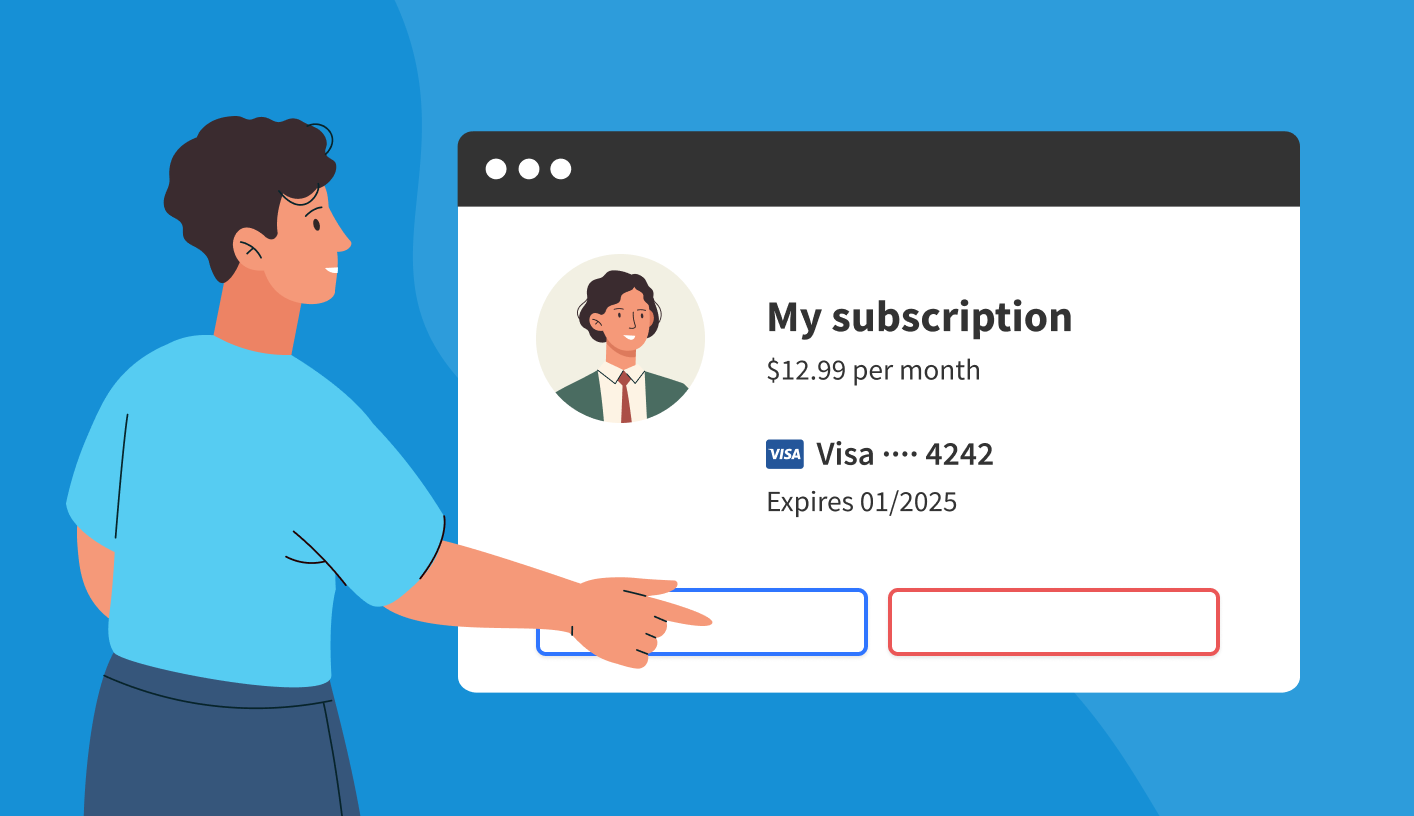What Is SaaS Management? And What Is the Best Software?

SaaS spending is expected to rise to about $232 billion in 2024 alone, indicating a significant increase in perceived growth and value. As we become a more tech-forward society, millions of businesses rely on SaaS tools to manage their operations, a trend that will likely continue. This implies that companies will pursue SaaS management tools and support with equal vigor, aiming to make their investments as efficient as possible.
But what exactly is SaaS management? It's similar to managing any other asset. It involves overseeing and monitoring the use, renewal and on- and off-boarding processes of your fleet's SaaS tools.
We understand it may seem tedious, but fantastic software options are available to make this process a breeze for you. Read on to discover how SaaS management software can keep your practices as efficient as possible and the best SaaS management platform options that meet your needs.
What Is SaaS Management?
Effective SaaS (software as a service) management is critical to business operations. Although it may seem simple and inherent in SaaS product licensing, its domain requires careful attention to keep businesses and teams efficient as they operate, change products and renew.
To achieve this, it’s essential to use SaaS management platforms, which are crucial in managing these applications efficiently. Failure to do so can significantly impact your operations, leading to slow productivity and potential legal liabilities. Additionally, bad user experiences due to technology malfunctions can result in churn, directly affecting your bottom line.
One area of concern is product licensing, where best practices dictate that each employee has their own license. Unfortunately, this is not always the case, and people often share logins and licenses, potentially exposing the company to legal issues. By adopting a strategic and replicable process for onboarding, licensing and offboarding, you can avoid illegal practices such as license swapping while saving time and ensuring compliance.
Why Businesses Need SaaS Management
You already know that the practice of SaaS management is here to boost your productivity and limit your liabilities. However, that’s not all the benefits you’re eligible for upon adoption. Here are a few other reasons SaaS management is worth the squeeze for your business.
Prevent and Reduce Shadow IT
Shadow IT refers to the practice of employees using technology or software without obtaining the authorization of their IT department. To address this issue, it is essential for everyone to be aware of the permissible practices. This can be achieved by establishing well-defined guidelines through SaaS management. Employees won’t use unapproved technology if they have the right tools to do their jobs effectively.
Cost Effectiveness: Spend Visibility and Analysis
When your team engages in shadow IT practices and isn’t fully aware of what SaaS apps or subscriptions you have in your SaaS stack, it can make it difficult to determine exactly how much you’re spending on your stuff.
This can limit your adaptability as a brand, possibly lower your revenue and productivity, and generally isn’t good. However, your SaaS management process can keep you fully aware of costs, allowing you to autonomously manage your SaaS solutions and fleet through a single, centralized platform or entity.
License and Renewal Management
Stuff expires — and you don’t want the expiration of your SaaS tools to affect your business or your customer experience at any point in time. At best, you wouldn’t be as productive, slogging through license renewal tasks instead of your actual work. At worst, your site could go down, your payment gateways won’t work and your customers will be left wondering what’s happening and will likely go elsewhere for their items and services.
Data Security, Risk Reduction and Compliance
SaaS applications (especially those housed in cloud-based software) are pretty safe on their own. They often have their own failsafe tools and data security measures to keep you as secure as possible when operating within their confines and preferences.
When people are license-swapping and sharing log-on credentials, or stuff is lapsing and floating in your business operations, this level of protection goes down…and so does your overall compliance ranking.
Keeping your SaaS applications handled, secure and updated using an airtight SaaS management approach keeps your liabilities limited and your team as secure as possible — as it should be.
Convenience, Accessibility, Utilization and Value
Self-done vendor management and subscription management can be difficult, ineffective and expensive. Let’s be honest — password management is hard enough in a business and often takes a good chunk of the IT department’s time. It’s not fair or feasible to expect them to manually manage a business’s entire fleet of cloud-based software and SaaS tools.
Governance and Distributed Access
Managing your governance and distribution tasks for certain SaaS software and licenses, including managing software licenses, can be difficult, especially through manual or fractional processes. A single, centralized solution is best to streamline your steps in this specific area.
A centralized platform enables monitoring, control and automation, while role-based access control protects sensitive data and limits access. In addition, implementing role-based access control mechanisms ensures that only authorized personnel can access sensitive data.
This enhances security and reduces the risk of data breaches, minimizing the potential damage caused by unauthorized access. This approach also enables administrators to set granular access controls for different users based on their roles and responsibilities, streamlining workflows and increasing efficiency.
8 Best SaaS Management Platforms and Software
As businesses increasingly rely on cloud-based software solutions, managing multiple SaaS subscriptions can quickly become challenging. Fortunately, several SaaS management tools are available to streamline the process, optimize costs and improve security. Let’s take a closer look at some of the top SaaS management platforms and software and explore their key features.
Zluri
Zluri helps organizations get granular, focusing specifically on lowering SaaS spend, shadow IT practices and security risks across your fleet. The SaaS management platform has been acclaimed by G2, winning multiple awards in 2023 — and is trusted by several leading names across industries.
Zluri works in four simple steps:
Discovery: You’ll get to know your entire fleet and what quantitative value each tool brings
Optimization: You’ll manage your SaaS costs and streamline to hit your goals
Manage: You’ll access all contracts in one place
Execute: Operate out of a sleek cloud interface that has all the data points you need to succeed
Pricing is done on a custom basis.
Zylo
Zylo uses the power of AI to keep your renewal and management process simple. The SaaS management tools included in Zylo’s native interface allow you to proactively manage SaaS spend and optimize your licensing steps, keeping you compliant and cost-effective. It’s tailored for IT and SaaS businesses.
Productiv
If you love workflows, this is the tool for you. Productiv is loved by industry titans for its spend management and workflow integrations, focusing on productivity and profitability.
Torii
Torii focuses on automating your routine SaaS management tasks, operating through a centralized dashboard for ease of use. You can create risk-management-specific workflows, automate tasks based on triggers (such as employee departure) and more.
Vendr
Of all of the SaaS management platforms, Vendr is the best for enterprise organizations looking to save on their software subscriptions. Enjoy strategic insights and automation as you set up your triggers, workflows and SaaS stack in the most efficient and cost-friendly way possible. Pricing starts at $36,000, charged at a flat annual rate — covering a full money-back guarantee if you’re not saving more than Vendr’s cost.
BetterCloud
While useful, SaaS management tools don’t always focus on “bulking down” your workflow and library. But BetterCloud does. This service specializes in automation and “lean IT,” working to optimize your efficiency in a convenient, no-code way.
In short? It’s like the IT team for your IT team. And SaaS companies love it.
NachoNacho
NachoNacho won’t just optimize your SaaS stack and manage your costs. It’ll connect you to a global marketplace of apps that help you do what you do cost-efficiently.
This feature is unique from many of the SaaS management solutions out there — and the best part? Upon signing up, you’ll get a free month (after which pricing starts at $5/month).
CoreView
This tool is specific to Microsoft 365 users, allowing you to manage licenses and improve your governance across your organization. The company is used worldwide and has made the Inc5000 list due to its popularity and infrastructure. Users will also enjoy administration-specific workflows, automation and seamless license renewals — keeping stress out of your operations setup.
Finding a SaaS Management Solution That Works for You
SaaS management is becoming increasingly important as more businesses rely on various software applications and tools to run their operations. Effective management of SaaS usage and your technology stack can help optimize operations, reduce costs and improve security.
By managing SaaS operations, you can eliminate duplicate apps, streamline workflows and ensure all your apps are utilized efficiently. However, neglecting proper SaaS management can lead to wasted resources, data security risks and decreased productivity.
So, if you haven't already, it's time to take charge of your SaaS management. The numerous benefits can help businesses like yours stay ahead of the competition.


